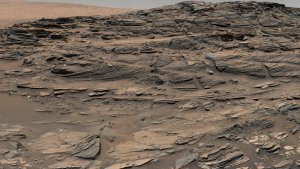| News / Space News |
France's Flooding Rains Examined by NASA’s IMERG
Eastern France has experienced unusually heavy rainfall this month and NASA satellite data has helped determine where the largest rainfall occurred.

France's flooding rains examined by NASA’s IMERG. Image credit: NASA’s Goddard Space Flight Center
The national weather agency for France has put out orange alerts for flooding in large areas of France. Frequent rainfall has caused widespread flooding along the Seine River that flows through Paris. Paris has had flooding similar to the June 2016 inundation when water levels reached more than six meters (20 feet).
The Global Precipitation Measurement mission or GPM core satellite can measure precipitation from space. GPM is a joint mission between NASA and the Japan Aerospace Exploration Agency, JAXA. There’s also a GPM constellation of satellites that provide additional rainfall data to provide a more comprehensive picture of events.
At NASA’s Goddard Space Flight Center in Greenbelt, Maryland, an analysis was conducted using NASA's Integrated Multi-satellitE Retrievals for GPM (IMERG) data generated during the period from January 17 to 25, 2018.
The data acquired from the GPM constellation of satellites are used to make the IMERG product. IMERG data are calibrated using Microwave Imager (GMI) and Dual-Frequency Precipitation Radar (DPR) data received by the GPM core observatory satellite.
The IMERG derived rainfall accumulation map showed that rain fell over large parts of France during the past week but the highest rainfall totals were found over eastern France. The highest rainfall totals occurred along the Seine River east of Paris. These IMERG estimates indicate that rainfall totals greater than 180 mm (seven inches) occurred in this area where the Seine River flows toward Paris.
Those regions where the heaviest rainfall were found include Nord-pas-de-calais, Picardy, Isle of France – where Paris is located, Champagne-Ardenne, Burgundy, Centre and Franche-Comte. An area in east-central Switzerland also experienced similar high rainfall totals.
Regions in coastal France received as much as six inches of rainfall. According to the IMERG calculations, those areas include the regions of eastern Britanny, south through Pays De La Louire, Poitou-Charentes, Limousin.
The rainfall continues to elevate the levels in the Seine River, which is expected to reach a peak of up to 6.2 meters (20.3 feet) in the capital on January 27. According to France’s Ministry of Ecological and Solidarity Transition, the forecast peak for the Seine is about four to five meters above its normal height. (NASA)
YOU MAY ALSO LIKE





